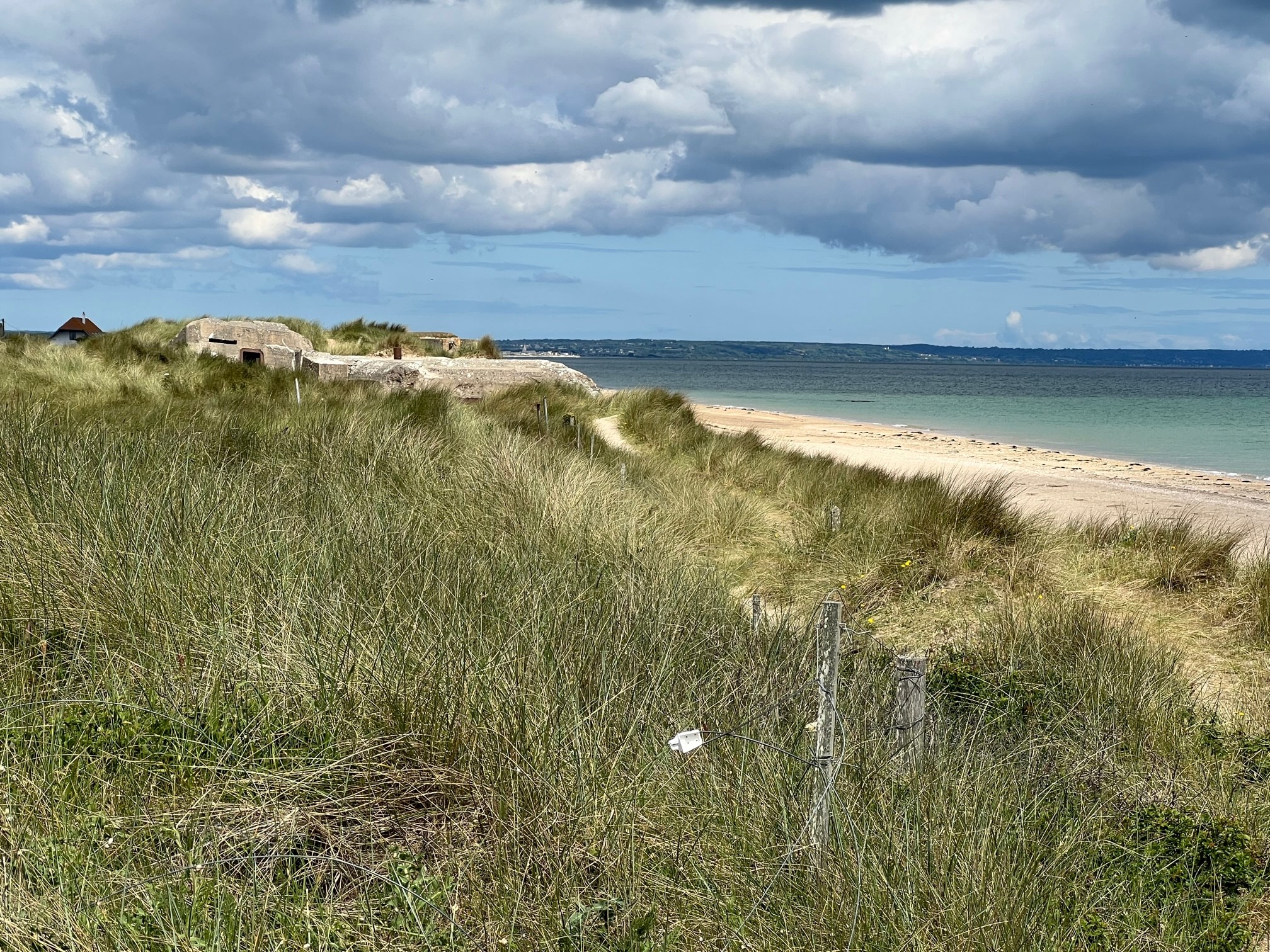Utah
I returned to Utah Beach to view the beach defences.
Utah was one of the two American landing zones, the other being Omaha. It was chosen as it is on the Cherbourg Peninsula and would allow troops to attempt to capture the deep-water port of Cherbourg quicker. It was defended by the 709th German Infantry Division with seven strongpoints and two coastal batteries. I visited one of these strongpoints and the two batteries.
A strong current meant that the main landing was 2 km south of their intended landing point. This meant the US troops landed south of one of the major German strongpoints. The German response was not as fierce as on other beaches. The main logistical issue was the narrow exit roads which crossed the flooded inland areas to access the peninsular. At the end of the day on the 6th of June 1944, 1,700 vehicles and 23,250 troops had landed on the beach. 197 Allied men had died with 60 missing. Amphibious tanks had provided essential support on this beach providing immediate fire power. 28 of the 32 DD tanks planned for the first wave attack managed to land, clearing German lines with greater firepower.
At the end of the day, landed troops met with airborne troops of the 82nd and 101st airborne divisions. This was the most successful landings of the five allied beaches in Normandy.
I visited a clearly defined strongpoint within the sand dunes. Two casemates at either end, one covering the beach to the north, while the other to the south. Numerous machine gun positions. Further bunkers located within the complex provided stores and living accommodation.




The Crisbecq battery at Saint Marcouf played a major role during the D-Day landings at Utah beach. It had four 210mm guns and although bombed by the Allies before D-Day, suffered little damage and opened fire on the morning of the 6th of June. An attack by American paratroopers from the 101st Airborne was repelled, and the battery was held in German hands until the night of the 11th of June. 78 of the German troops evaded capture and managed to leave the battery and return to German lines. Shells from this battery sunk the USS Corry. The battery today is a great museum with a planned route through the bunkers and casemates.



Azeville battery is set further inland behind Crisbecq and has four casemates. The museum offers a self-guided tour with audio. There are over 300m of underground tunnels which can be explored, and you fully understand how these gun points were connected and living conditions for troops serving there were. Unlike Crisbecq, the commander of the battery surrendered the position on the 9th of June. On the night of the 8th of June, USS Nevada fired on the battery and put casemate one out of action. One shell, fired from the Nevada, flew through the gun opening, missing the cannon, pierced the floor and lower wall behind the gun. It bounced through the next room and hit the inner part of the rear outer wall. The shell did not explode, but the air pressure of the shell killed around 15 men within the casemate. You can see the damage caused by this one shell.




